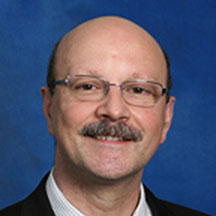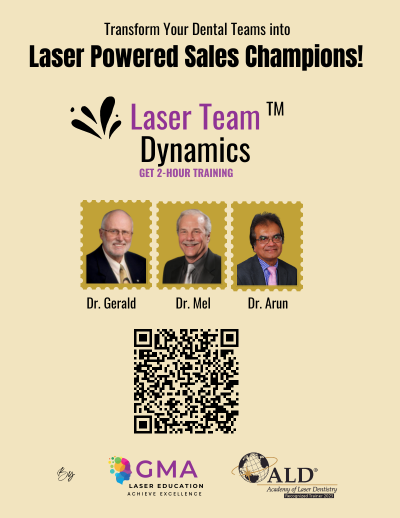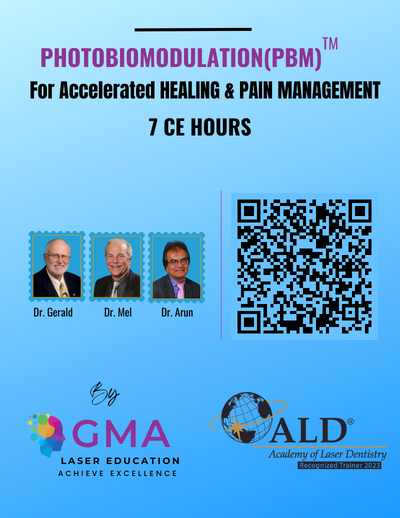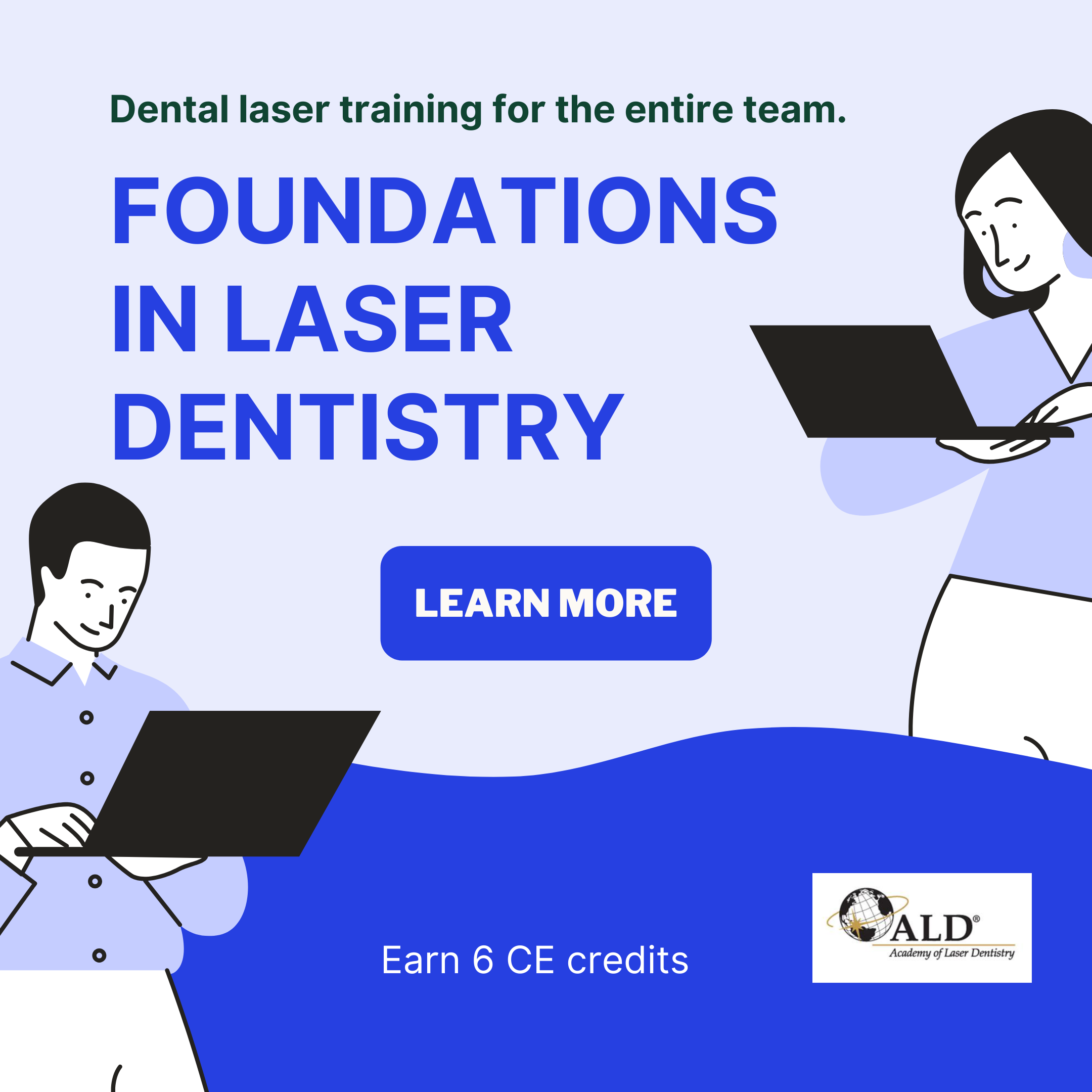ALD LEARNING LIBRARY - PERI-IMPLANTITISBone Regeneration Using a Diode Laser, Dr. Laura Braswell Future Role of Lasers in Treatment of Peri-Implantitis, Dr. Edward Kusek Current Trends in the Treatment of Bacteria Related Periimplantitis, Dr. Sebastiano Andreana Bone Regeneration Using a Diode Laser Laura Braswell, DDS, Buckhead Periodontics, Atlanta, Georgia, USA
Research has shown that the Nd:YAG laser is effective for bone regeneration. The diode laser can also be used for bone regeneration around implants and natural teeth. A technique will be presented for treating periodontitis and per-implantitis with the ultimate goal of new bone for both tooth and/or implant retention. This step-bystep protocol will explain the purpose and science behind the process showing clinical and radiographic success. Problem cases will also be shown with theoretical concepts of what could have gone wrong. By reviewing our successes and our complications we can all improve our clinical outcomes.
Educational Objectives
Note: This presentation discusses investigational devices that have not yet received U.S. FDA approval or clearance for the specified clinical indications, or describes off-label uses.
Future Role of Lasers in Treatment of Peri-Implantitis Educational Objectives
Presented August 19, 2020
Current Trends in the Treatment of Bacteria Related Periimplantitis Sebastiano Andreana, DDS, MS
 The presentation will focus on diagnosis and definition of peri-implantitis according to the recent classification. Furthermore, different current clinical protocols will be presented, including the use of different decontaminating agents together with different laser wavelengths. Several clinical scenarios will be showcased. The presentation will focus on diagnosis and definition of peri-implantitis according to the recent classification. Furthermore, different current clinical protocols will be presented, including the use of different decontaminating agents together with different laser wavelengths. Several clinical scenarios will be showcased.
Educational Objectives
Presented May 26, 2020
ALD Organization Disclosure - Disclaimer on Protocols and Opinions
The views expressed and opinions and materials presented during a presentation represent the personal views and opinions of the individual speakers and do not necessarily represent the views and opinions of the Academy of Laser Dentistry. The Education Committee of the Academy of Laser Dentistry may review content only as it relates to topics within the Curriculum Guidelines and Standards for Dental Laser Education. The Academy of Laser Dentistry assumes no responsibility for the content of the presentations made by individual speakers pertaining to protocols for laser treatment. Any suggested protocols for treatment may be based upon the speakers' own clinical experience and should not be construed as Academy of Laser Dentistry recommended protocols.
|

 This program incorporates a didactic presentation of specific treatments for peri-implantitis that have been successful for clinicians. Laser devices and techniques to be discussed include a 9300-nm carbon dioxide laser (Solea, Convergent Dental, Needham, Mass., USA); 2780- nm Er,Cr:YSGG laser (Waterlase iPlus, Biolase, Irvine, Calif., USA); and photobiomodulation with an 810 and 980-nm diode laser (Gemini, Ultradent, South Jordan, Utah, USA). Included is a discussion of adjuncts used for the treatment, including certain biologics, as well as an explanation of a 2017 consensus report on treating peri-implantitis.
This program incorporates a didactic presentation of specific treatments for peri-implantitis that have been successful for clinicians. Laser devices and techniques to be discussed include a 9300-nm carbon dioxide laser (Solea, Convergent Dental, Needham, Mass., USA); 2780- nm Er,Cr:YSGG laser (Waterlase iPlus, Biolase, Irvine, Calif., USA); and photobiomodulation with an 810 and 980-nm diode laser (Gemini, Ultradent, South Jordan, Utah, USA). Included is a discussion of adjuncts used for the treatment, including certain biologics, as well as an explanation of a 2017 consensus report on treating peri-implantitis. 




